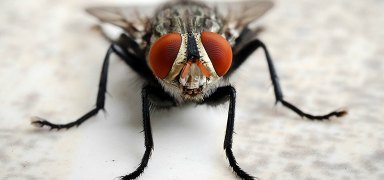10 fascinating realities about flies you never knew

Flies can be a major irritation to anybody and their steady humming around can truly drive you up the wall. For organizations, especially those in the nourishment and pharmaceutical enterprises, they can be a colossal worry because of the effect they can have on customer wellbeing.
In any case, flies can be very intriguing animals. Their reproducing, sustaining, and notwithstanding moving propensities are very unique in relation to our own and can really be very fascinating.
In the event that you have an issue with a fly pervasion around your business or home, contact your nearby Western Exterminator office to talk about fly expulsion and fly counteractive action arrangements.
The following is a rundown of realities about flies you have to know.
- House flies live on a fluid eating routine
Indeed, that is right. Flies will in general live off an eating routine dependent on fluids. Why? All things considered, that is exactly how they are constructed. It's just plain obvious, they come up short on the mouthparts expected to bite nourishment, so all things being equal, they need to drink it.
How do house flies eat?
A house fly will disgorge stomach related juices onto strong nourishments and these juices separate the sustenance into little pieces, enabling them to utilize their mouthparts, called proboscis, to drink the dinner.
- They can taste with their feet
Like butterflies, flies can taste sustenance utilizing their feet!
This is all down to taste receptors (chemonsensilla) being situated on their lower legs and feet. At the point when a fly grounds on a scrumptious dinner, which can be anything from creature dung to your lunch, they will regularly meander around to give their next supper a decent taste before expending it.
flies have grimy feet
- House flies crap… a great deal
What's more, they aren't also stressed over where they do it either!
As you most likely are aware, house flies like to live off a fluid eating routine. Along these lines, their stomach related framework can move rapidly, which means they poo regularly. It is guessed that house flies poo each time they land, regardless of whether it's on their next feast!
- They can spread a scope of maladies
Because of their nourishing and rearing propensities (more on that later) house flies come into contact with a scope of hurtful microbes, for example, Salmonella and E.coli. Along these lines, house flies will frequently help the spread of these microorganisms passing them onto us by debasing things, for example, nourishment and cooking utensils.
- House flies can walk topsy turvy
Let's be honest, you presumably definitely knew this one.
The life structures of a house fly empowers it to walk and hop on most surfaces regardless of if it's flat, vertical, or even topsy turvy.
This is because of each foot containing two fat foot cushions (called pulvilli) which contain small hairs that produce a paste like substance made of sugars and oils which gives them astounding hold, ideal for scaling any surface.
- Flies can see behind them
The truth is out, house flies can see behind them and it's everything to do with their stunning eyes.
In contrast to individuals, house flies have compound eyes. These many-sided eyes gave them about a 360-degree field of view, which enables them to see behind themselves. Not at all like our own, the eyes of a house fly don't move. Having the option to find every which way enables them to explore while likewise being vigilant for threat.
Fly eyes
- The life expectancy of a house fly isn't that long
By and large, the existence cycle of a house fly goes on for around 30 days, which means they don't live for long by any stretch of the imagination.
Be that as it may, in their short lifetime, they figure out how to achieve a considerable amount. House flies can lay up to 500 eggs in their lifetime which are typically in clumps of around 75 to 150. Along these lines, in spite of the fact that they don't live long, a pervasion can rapidly emerge through new ages.
- House flies have astounding response times
Ever asked why it's so hard to swat a fly? All things considered, it's practically down to their snappy response times and their dexterity.
House flies can process what they see and respond as needs be at stunning paces. To place things into point of view, our cerebrums procedure around 60 pictures per second, though a fly can process around 250 of every a solitary second.
- They have unhygienic rearing propensities
House flies aren't generally devotees of hurrying to the medical clinic to conceive an offspring. Their picked technique is somewhat nauseating too.
House flies will lay their eggs on things, for example, excrement, spoiling bodies, and rotting natural product. For what reason is this? Indeed, it's essentially to give the hatchlings (worms) with something to eat when they bring forth.
- Male house flies are always searching for a date
Keep in mind, in Fact 6, when we examined according to a fly? All things considered, they additionally assume a job in how houseflies discover an accomplice.
@hr1
Studies demonstrate that there's a particular district inside the eyes of a male fly called the "adoration spot." It is basically utilized for identifying and pursuing female flies. This "spot" is situated inside the dorsofrontal district of their eyes. This is commonly used to distinguish little target movement, be that as it may, guys additionally use it to remain "bolted onto potential mates during aeronautical interest."